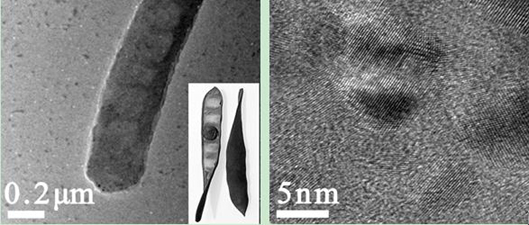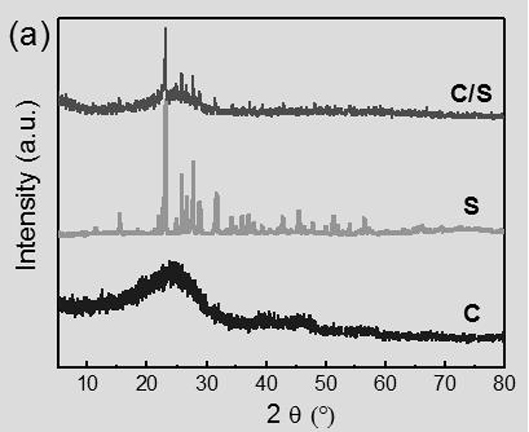Preparation method of ordered nano-array nitrogen-sulfur double-doped carbon-sulfur composite carbon rod material and lithium-sulfur battery
A nano-array and nano-carbon rod technology, which is applied in the preparation of ordered nano-array nitrogen-sulfur double-doped carbon-sulfur composite carbon rod materials, and in the field of lithium-sulfur batteries, can solve the problem of difficult to meet the requirements of secondary batteries and the practical application of fuel cells , Limiting large-scale application and other issues, to achieve the effect of improving electrochemical performance, low cost, and excellent performance
- Summary
- Abstract
- Description
- Claims
- Application Information
AI Technical Summary
Problems solved by technology
Method used
Image
Examples
Embodiment 1
[0037] This embodiment provides a method for preparing an ordered nano-array nitrogen-sulfur double-doped carbon-sulfur composite carbon rod material, including the following steps:
[0038] S1. Mix and grind the tea seed cake and KOH at a weight ratio of 1:4, put it into a stainless steel autoclave, add 60mL of distilled water and stir evenly, add 20mL of formaldehyde solution with a concentration of 36.5%, seal the autoclave and place it at 80°C 3 hours in a blast drying oven, then react at 180°C for 12 hours, after cooling to room temperature, take out the sample, filter, wash and dry with distilled water to obtain ordered nanoarray precursor carbon rods;
[0039] S2. Place the dried ordered nanoarray precursor carbon rod obtained in step S1 in a quartz boat and place it in a tube furnace, and calcinate it at 800° C. for 2 hours under the protection of argon flow, and use dilute nitric acid and Wash the sample thoroughly with distilled water to obtain an ordered array of ca...
Embodiment 2
[0043]This embodiment provides a method for preparing an ordered nano-array nitrogen-sulfur double-doped carbon-sulfur composite carbon rod material, including the following steps:
[0044] S1. Mix and grind nut shells and KOH at a weight ratio of 1:3, put them into a stainless steel autoclave, add 60mL of distilled water and stir evenly, add 20mL of formaldehyde solution with a concentration of 36.5%, seal the autoclave and place it in a drum at 80°C Air drying oven for 3 hours, then react at 180°C for 12 hours, after cooling to room temperature, take out the sample, filter, wash and dry with distilled water to obtain ordered nanoarray precursor carbon rods;
[0045] S2. Place the dried ordered nanoarray precursor carbon rod obtained in step S1 in a quartz boat and place it in a tube furnace, and calcinate it at 800° C. for 1 hour under the protection of argon flow, and use dilute nitric acid and Wash the sample thoroughly with distilled water to obtain an ordered array of ca...
Embodiment 3
[0049] This embodiment provides a method for preparing an ordered nano-array nitrogen-sulfur double-doped carbon-sulfur composite carbon rod material, including the following steps:
[0050] S1. Mix and grind the peanut cake and KOH at a weight ratio of 1:4, put it into a stainless steel autoclave, add 60mL of distilled water and stir evenly, add 20mL of formaldehyde solution with a concentration of 36.5%, seal the autoclave and place it in a drum at 80°C Air drying oven for 3 hours, then react at 180°C for 12 hours, after cooling to room temperature, take out the sample, filter, wash and dry with distilled water to obtain ordered nanoarray precursor carbon rods;
[0051] S2. Place the dried ordered nanoarray precursor carbon rod obtained in step S1 in a quartz boat and place it in a tube furnace, and calcinate it at 800° C. for 1 hour under the protection of argon flow, and use dilute nitric acid and Wash the sample thoroughly with distilled water to obtain an ordered array o...
PUM
| Property | Measurement | Unit |
|---|---|---|
| diameter | aaaaa | aaaaa |
| length | aaaaa | aaaaa |
Abstract
Description
Claims
Application Information
 Login to View More
Login to View More - R&D
- Intellectual Property
- Life Sciences
- Materials
- Tech Scout
- Unparalleled Data Quality
- Higher Quality Content
- 60% Fewer Hallucinations
Browse by: Latest US Patents, China's latest patents, Technical Efficacy Thesaurus, Application Domain, Technology Topic, Popular Technical Reports.
© 2025 PatSnap. All rights reserved.Legal|Privacy policy|Modern Slavery Act Transparency Statement|Sitemap|About US| Contact US: help@patsnap.com



